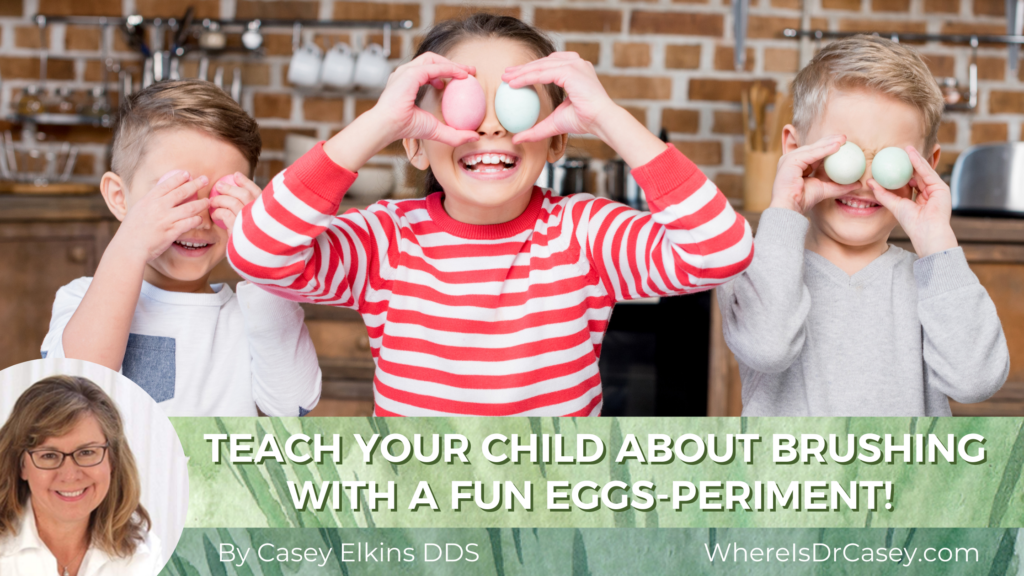
Getting kids excited about their oral health isn’t always easy! Sometimes it takes a fun experience or yummy recipes to kick start their passion for lifelong dental hygiene. This “Egg-speriment” is a great interactive way to explain to your little one how important it is to keep their teeth clean! It will also show them how the food choices they make can affect their oral health.
What To Expect!
This experiment will take 5-6 days for the best results. It may be easiest if you start on a Thursday or Friday afternoon, so you can perform all the steps after school or on the weekend. In the experiment, we will use an egg to represent the teeth and vinegar to represent the acids made by plaque bacteria. This is what causes tooth decay and cavities. Both eggshells and teeth can be weakened by acid, which is why good dental hygiene is vital.
What You Will Need!
- 4-5 oz Cavity protection toothpaste (active ingredient: sodium chloride)
- Glass measuring cup
- Several fresh eggs (no cracks!)
- Ordinary vinegar
- Teaspoon
- Plastic wrap
- Marker
- Clear nail polish
- Paper towels
The Egg-speriment Steps!
- Allow all of the eggs to warm-up to room temperature. With clean hands, wash the egg with water and dry with the paper towel.
- Empty the entire tube contents of cavity protection toothpaste into the glass measuring cup. Pat down with a teaspoon to level toothpaste and remove any air bubbles.
- Mark one side of the egg with a marker and then cover the mark with clear nail polish, to protect it from being washed away by the vinegar.
- After the nail polish has dried over your mark. Place the egg into the measuring cup, marked side down so the toothpaste covers half the egg. Make sure the egg does not touch the bottom of the cup.
- Cover the cup tightly with plastic wrap and leave it in a safe place at room temperature for at least four full days (96 hours).
- After soaking in vinegar, use clean hands to rinse the toothpaste off the egg with warm tap water. Let the egg dry overnight.
- Pour enough vinegar into the clean glass measuring cup to cover the egg, and then carefully place the egg in the vinegar with the spoon. Rest the spoon on top of the egg to keep it submerged under the vinegar, and cover the cup with plastic wrap. You will notice bubbles starting to form on the side of the egg that was not treated with toothpaste.
- Leave the egg in the vinegar until the untreated side (the unmarked side) of the egg softens. This will take 7 to 13 hours.
- After 7 hours in the vinegar, remove the egg to see if the side not treated with toothpaste has softened. You can tap the egg lightly with your finger or pen. If soft, go on to step 11.
- If the untreated side is still hard, put the egg back into the vinegar. Check the egg every hour or two afterwards until the untreated shell has softened.
- When the untreated side is soft, remove the egg and gently wash it with warm tap water. The egg is very fragile now, so be careful! Note: If you are not going to be home after the egg has soaked for 7 hours, take the egg out of the vinegar and wash it in warm water. Write down how many hours it was in the vinegar. As soon as you return, put the egg back into the vinegar and continue checking it every hour or so for softness. But be sure not to leave the egg out of the vinegar for more than 12 hours.
We hope your family enjoyed learning through this health-based experiment! For more activities and healthy recipes to teach your kids about the importance of maintaining good oral hygiene feel free to Contact Us!







0 Responses